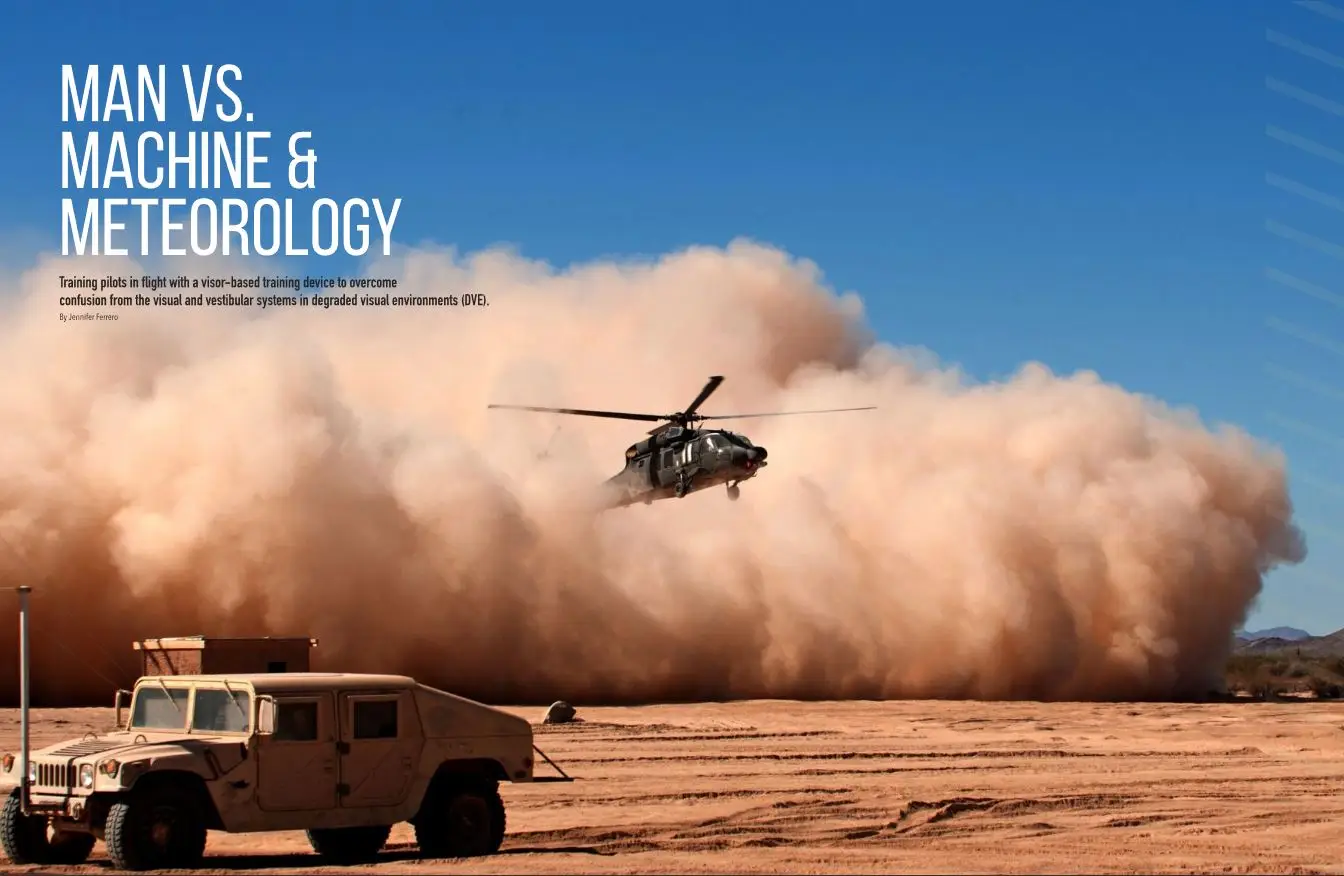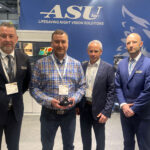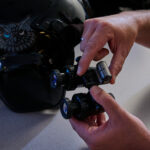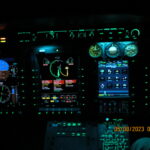Training pilots in flight with a visor-based training device to overcome confusion from the visual and vestibular systems in degraded visual environments (DVE).
By Jennifer Ferrero, shared with permission from Northwest Aerospace News | May 2022 Edition
Humans have overcome amazing odds in taking flight. Helicopters fly around 10,000 feet (about the height of Mount St. Helens), and commercial air flights hover around 30,000-40,000 feet. In addition to the altitude gain, other physiological factors are at play in taking flight. For pilots, the visual system (sight) is one method for understanding the world outside, the horizon, the instrument panels, and internal and external factors of the cockpit. The vestibular system is commonly thought of as the auditory system, but has more to do with motion and balance, while the auditory system deals in hearing. The different human body systems are in play during flight. Additionally, meteorological systems are at play in nature, and weather can be severe at many places in the world.
For pilots like Tyson Phillips, he is concerned about spatial disorientation during flight, which is especially common during night flights and in degraded visual environments (sand, snow, low light, rain, fog, etc.) That is why Phillips, along with partner Andre Lavallee created a pilot training tool called ATS Device. Per their website, www.atsystemsllc.com, “The ATS Device is a patented in-aircraft training device that trains pilots for DVE, such as IIMC (inadvertent instrument and meteorological conditions) and brown/white out. Effective real-world training will reduce high accident rates occurring in these environments.”
Accidents like the 2020 Calabasas helicopter crash, which killed nine people including the pilot, retired basketball star, Kobe Bryant, his daughter, and family friends, has been partially attributed to DVE and spatial disorientation. The National Transportation Safety Board (NTSB), following a review of that crash, has recommended better pilot training in this area to minimize future accidents.
AT Systems LLC has created the ATS Device and has partnered with Aviation Specialties Unlimited, Inc. (ASU, Inc.) of Boise, Idaho to supply in-flight training, with real-world DVE scenarios, using the ATS Device. This is a case of an innovative product in the aviation marketplace that is going to fit the need for more intensive in-flight training for pilots. The ATS Device is a helmet or head-mounted system that connects to both a visual gradually opaque visor (depending on the exercise), and an iPad with custom software programming to simulate DVE and IIMC flight issues. It teaches the pilot to strategize beyond spatial disorientation and make better decisions during DVE.
ASU, Inc. offers the AT Device with training at the Boise location or on site. Their experienced instructor pilots support companies who would like to train using the ATS Device.
According to the ASU, Inc. website, www.www.asu-nvg.com, “For more than 25 years, Aviation Specialties Unlimited Inc. (ASU) in Boise, Idaho, has proudly served those who protect and defend worldwide with Night Vision Solutions that Save Lives! The experienced team supports safe and sustainable aviation night vision programs with military-grade NVGs, specialized tools and test equipment, custom aircraft lighting, and a full array of training and Night Vision Imaging System integration services.”
Read the full article in Northwest Aerospace News Magazine
The appearance of U.S. Department of Defense (DoD) visual information does not imply or constitute DoD endorsement.






